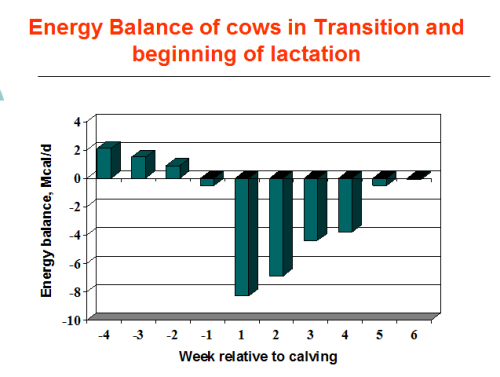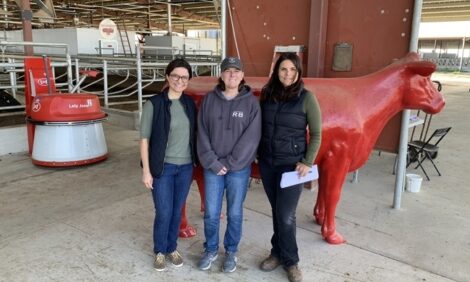



Preventing Metabolic Diseases During Transition
Speaking at the second European Board of Bovine Experts (EBBE) meeting, James Husband explains why negative energy balance should be avoided pre and post calving to prevent metabolic disorders.Metabolic diseases are expensive. It is estimated that, on average, they cost producers €320 per cow per year.
One metabolic disease opens the door to many others, said Mr Husband.
Whilst the genetic selection of dams and sires can stop the downward fertility trend, management and nutrition have a lot of influence.
There is a strong relationship between the main metabolic disorders (dystocia, retained placenta, metritis, displaced abomasum and mastitis) and reproductive disorders. All those disorders are linked to reduced conception rates.
Although cow comfort and environmental factors can play a part in the causes of disease and losses, nutritional deficiencies, in particular negative energy balance (NEB) in the transition period, seems to be an important cause.
The transition from gestation to lactation dramatically increases requirements for energy, glucose, amino acids and other nutrients in dairy cattle.
In order to prevent NEB, fat mobilisation throughout the transition period must be controlled to decrease dry matter intake (DMI) depression and immune suppression from high non esterified fatty acids (NEFA).
The energy balance of cows can be seen in Figure 1.

Results of immune suppression
NEB supresses immune function, promoting metabolic disorders. It potentially explains the relationship between infectious and non infectious transition disorders, said Mr Husband. On top of this, NEB plays an important role of inflammation response in infectious diseases as well as metabolic disorders.
Activated immune cells release nitric oxide, prostaglandines and citokines as an inflammatory responses, which promotes the breakdown of fat stores by decreasing feed intake. This leads to the risk of metabolic disorders.
Mr Husband suggested that in diets full of omega 6 (maize based diets), feeding more omega 3 rich spring grasses could reduce prostaglandine production and limit inflammatory response. Omega 3 diets also provide more favourable environments for estrogen production and embryo nesting in the uterus. Prostaglandines can PROMOTE embryo loss.
HOT
Many will be aware of the Hepatic Oxidation Theory (HOT), which indicates that feed intake is controlled by oxidation of fuels in the liver.
Feeding behaviour has been linked to adenosine triphosphate (ATP) concentration in the liver with satiety occurring as fuels are oxidized and ATP is produced, and hunger occurring as oxidation decreases and the pool of ATP is depleted.
Mr Husband warned that it is still not certain how ATP concentration influences firing rates of the hepatic vagus nerve (the nerve that connects the liver to the brain).
Therefore to increase feed intake, it is important to increase oxidation. Oxidation in ruminants is fueled by fatty acids, propionate, lactate and amino acids.
Controlling fat mobilisation
Fatty acids: NEFA from body fat mobilisation suppresses DMI in the transition period. Fat mobilisation is affected by plasma insulin concentration. Low levels of insulin mobilise fat and increase NEFA levels.
Studies show that plasma insulin levels decrease by up to 50 per cent in the weeks pre calving. Therefore insulin must be increased around calving to prevent a fall in DMI, explains Mr Husband. Around this time, cattle can also experience a lower response to insulin, as tissue sensitivity is reduced.
Insulin levels can remain low for several weeks, this increase in NEFA levels means that as well as a fall in DMI, there is a risk of fatty liver, warns Mr Husband.
High NEFA levels in the two weeks prior to calving are associated with two to four times increased risk of left displaced abomasum, a nearly two time increased risk of retained placenta, reduces milk yield and increases the risk of a cow being culled.
Measuring B-hydroxybutyrates (BHBs) and NEFAs during the first two weeks post calving will give a good indicator towards metabolic health.
Nutritional requirements of dry, close up and fresh cows should be carefully monitored, to ensure that certain feeds are avoided - such as avoiding highly fermentable starch sources in fresh cows.
Antioxidants can be used to prevent inflammation. Low antioxidant levels are commonly associated with transition disorders.
December 2011



